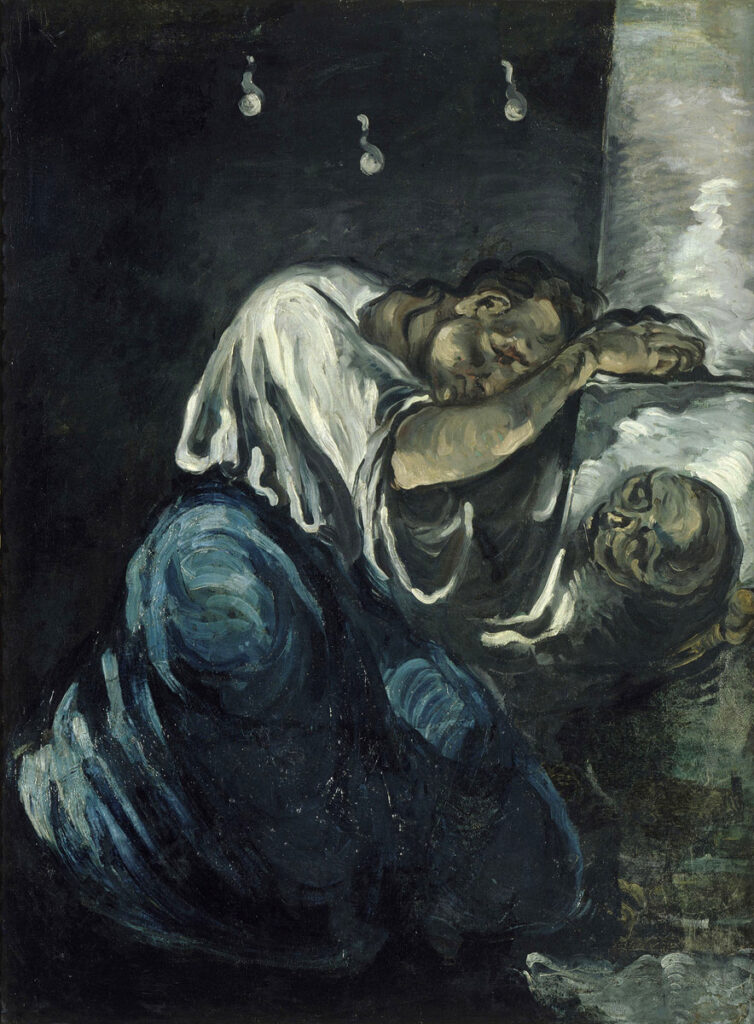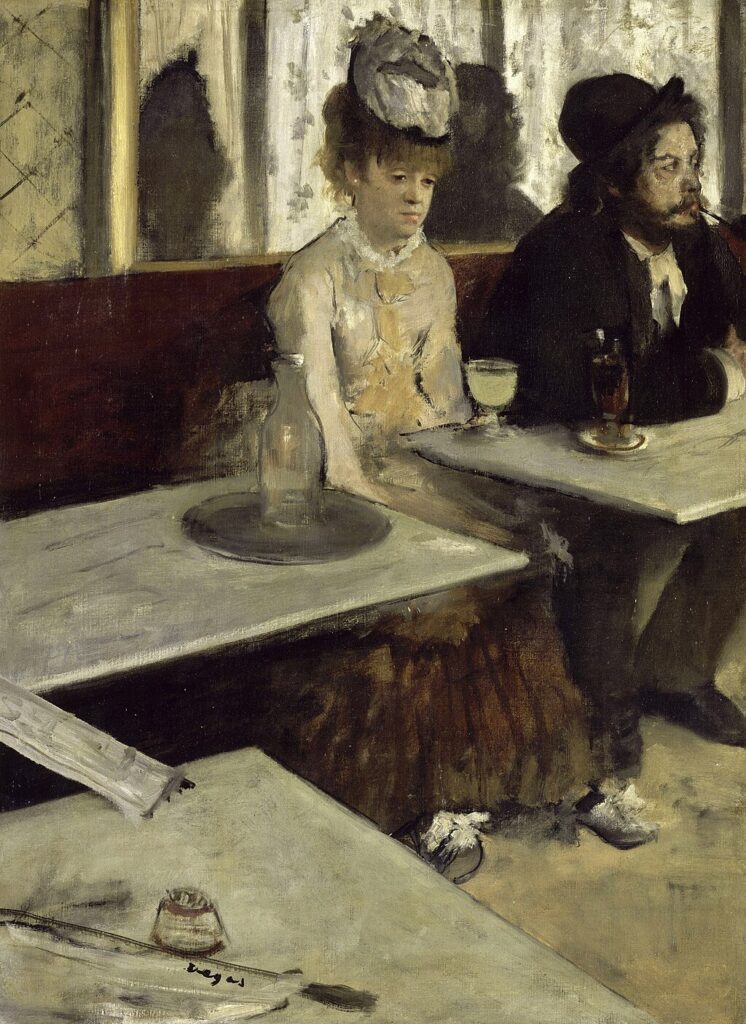A New Take on the Iconic Girl Reading a Letter by Vermeer
The recently restored Girl Reading a Letter at an Open Window by Johannes Vermeer (1632-1675) is often said to be that of a young woman reading a...
Tom Anderson 26 September 2024
Of the broad spectrum of human emotions, sadness is the one that has been a common underlying element of many famous artworks to date. The exploration of the melancholic condition and the different life events that stir this emotion has been captured beautifully by artists of all ages. Here you will see 11 of the saddest paintings in art history. Some are more subtle in their sadness, but all are masterworks in their ability to evoke that powerful emotion that all of us are susceptible to, especially the artists who created them.

Vincent van Gogh, At Eternity’s Gate, 1890, Kröller-Müller Museum, Otterlo, Netherlands.
Eternity’s Gate is perhaps the saddest painting of all because of what it represents both literally and figuratively. A bearded and bald old man bends over, his head in his hands and his elbows on his legs. It’s a striking moment of either cathartic crying or intense despair. It is, undoubtedly, a scene of sorrow and one that stands in for Van Gogh’s mental torment at the time.
However, the painting is given a portentous and somewhat hopeful title. The man may be suffering now, but he will find rest through faith and entering eternity’s gate after death.

Paul Cézanne, La Douleur (Sorrow), 1868-1869, Musée d’Orsay, Paris, France.
La Douleur (Sorrow), also known as The Magdalen, is by the great Post-Impressionist Paul Cézanne. It is a piece of pure anguish from losing a loved one. The particular lost loved one in this instance is quite significant, as the subject of the painting is an unrecognizable Mary Magdalene mourning the death of Christ.
She is keeled over in a dramatic position, her head and hand resting on a ledge. Her garment is blue and white. The blue is most prominent and seemingly bleeds into the white, accentuating her grief. Just under her hand to the right sits what looks like a distorted skull. It’s animated in much the same way as Mary and reveals the vitality of her mourning a momentous death.

Andrew Wyeth, Christina’s World, 1948, The Museum of Modern Art, New York City, NY, USA.
Andrew Wyeth’s famous painting is quite ambiguous. However, this does not mitigate the sadness it induces. It depicts a woman, the titular Christina, in a pink dress lying alone on a grassy field as she looks off at a farmhouse in the distance. She sits up in such a way that suggests she’s sort of reaching for the farmhouse, wanting to move there yet unable to. It’s easy to sense that she, for some reason, can’t get up.
Therefore, we can sympathize with her struggle and also feel struck with the same helplessness and hopelessness. The title, referring to the subject’s “world,” points to our psychological afflictions in life through Christina’s physical one.

Louis-Jean-François Lagrenée, La Mélancolie, c. 1785, Musée de Louvre, Paris, France.
This Rococo painting from 1785 is another signature depiction of melancholy. The woman sits against a dark background, holding her head with her arm on her thigh as she contemplates. Her facial expression indicates that her thoughts are probably not very joyful. Still, there is beauty in this sad pose.

Pablo Picasso, The Old Guitarist, 1903-1904, Art Institute of Chicago, Chicago, IL, USA.
The Old Guitarist is Picasso’s masterpiece from his Blue Period (1901-1904). The subject is a poverty-stricken musician. Its blue palette heightens the desolate mood, while the man’s bent neck and sloping, angular body emphasize his deprivation. Picasso understood this scene, being nearly poor himself years before.

Edgar Degas, L’Absinthe, 1876-76, Musée d’Orsay, Paris, France
Edgar Degas’ L’Absinthe may not evoke complete sorrow. However, it burdens the viewer in its depiction of the main subject’s loneliness and weariness. The woman–actress, and friend of Degas, Ellen Andree–sits with a posture both sullen and tired. Her facial expression looks dejected and her arms droop almost self-pityingly. A glass of absinthe sits on the table in front of her.
The man next to her smokes a pipe and looks off in another direction. He sits at an angle that suggests he is either a stranger or a disinterested companion, which further enhances the isolation of the woman. The creamy and yellow colors give the scene a feverish effect, perhaps conveying the psychiatric effects connected to the eponymous liquor. It’s a sad image because many of us can relate to feeling sad and alone amidst company.

Edvard Munch, Melancholy, 1892, National Gallery, Oslo, Norway.
Another hand on a head. However, this subject does not dominate the frame and his expression looks more like indignation than sadness. Yet the scene is a nice waterfront landscape and the distant figures in the background look as if they are enjoying their time on a dock. Therefore, there’s a feeling of pity for this poor man in the corner. What is bothering him? We wish we could help him to enjoy the scenery surrounding him, but many of us feel this way too sometimes. Edvard Munch, the great Norwegian artist, painted different versions of this scene in the 1890s.

Edward Hopper, Automat, 1927, Des Moines Art Center, Des Moines, IA, USA.
Almost any Edward Hopper piece could be included on this list, including his most famous work, Nighthawks. However, Automat is more impactful in its sad urban solitude. Like Nighthawks, it is shrouded in mystery. For example, we know the location thanks to its title but there are no visual signs of the (now extinct) self-serving restaurant. Even the light fixtures on the ceiling reflected in the dark window don’t reveal the interior scene. A woman simply sits alone with a coffee at a marble-top round table. Unlike Nighthawks and its lonely male subject, we see this woman’s face head-on; she looks contemplative and melancholy, though it is unclear what exactly her mood is.
Her clothes are also thought-provoking – where is she going or where has she been? Why does she only have one glove on? No matter the questions and answers, the primary emotional response to this piece is a distinct type of sadness.

Edward Hopper, New York Movie, 1939, Museum of Modern Art, New York City, NY, USA.
Since any Hopper piece could be here, I thought I would include two. This is also a personal favorite of mine. New York Movie is another meditative and mysterious piece. The woman (modeled after Josephine Hopper) wears an usher uniform and stands off to the side while moviegoers sit sporadically to the left. The movie on the screen is unidentifiable but its effect is sure to be felt in the painting’s dramatic use of light and shadow and the woman’s posture of standing repose.
Perhaps it is a film she loves, watching it at her workplace. This artwork contains more sadness when viewed in retrospect. Movie theaters today are not as sacred as they were in 1939; it is a communal experience lost in our current digital world of streaming at home. However, thanks to Edward Hopper, we can still reminisce and relate to the woman standing off to the side, enjoying the true cinematic experience felt only in a theater.

Frida Kahlo, The Wounded Deer, 1946, private collection. Fridakahlo.org.
The Wounded Deer is a sad painting because it represents Frida Kahlo’s physical and emotional pain. It is a self-portrait, but not the type we’re used to. Her head is on the body of a deer with antlers and arrow wounds. Blood flows from the arrows penetrating the animal body. The surrounding woods are dreary; brown and grey with barren trees and a dead branch on the ground. Kahlo’s expression is stoic and the body looks as if it is in motion, like she’s holding onto life while enduring the pain and sorrow. Unfortunately, this was a very accurate depiction of the end of her life.

Ivan Albright, Picture of Dorian Gray, 1943-44, Art Institute of Chicago, Chicago, IL, USA.
Ivan Albright’s painting is perhaps more disturbing than sad. However, its representation of Dorian Gray, a tragic figure in Oscar Wilde’s only novel, The Picture of Dorian Gray, published in 1890, has a tinge of sadness to it and deserves a spot on this list. This painting was used in Metro-Goldwyn-Mayer‘s 1945 film adaptation of the novel. While the film was in black-and-white, the painting was shot in technicolor to highlight the revolting lengths of Dorian’s immoral descent. Readers of the novel can view the painting and be appalled. However, by also knowing Dorian’s fate, they can feel heartbroken for Oscar Wilde’s iconic character.
DailyArt Magazine needs your support. Every contribution, however big or small, is very valuable for our future. Thanks to it, we will be able to sustain and grow the Magazine. Thank you for your help!